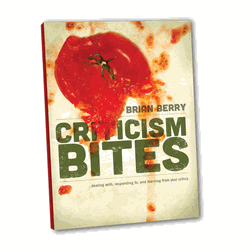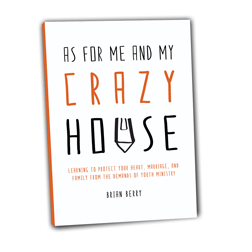I just finished reading How Full Is Your Bucket? by Tom Rath and the late, Donald D. Clifton. It’s a book that’s been out for several years, first printed in 2004 and per my dust jacket on the printing I have, it has sold over a half million copies. So as always, I’m a bit behind the curve on this one. It’s an easy read (110ish pages) and ignoring the fact that I’ve had it on my shelf for close to 9 months, I read it in a few hours today.
The book has a basic premise:
Everyone has an invisible bucket. This bucket is filled by encouragement and positive experiences and drained by negativity and destructive experiences. Every interaction we have each day either fills a bucket or drains one- both ours and the other(s) with which we are interacting with.
The principle is fairly simple then. The more you can do as a parent, coworker, boss, spouse, friend, etc… to encourage the best in others, the better all of you will feel and the more productive, enjoyable, and effective your lives will be. The authors do recognize that some constructive criticism is needed in all our lives, but they argue that studies prove that reinforcing the positive in people will result in quicker, more long lasting changes in the negative behaviors than harping on the bad stuff, any day of the week. So, bottom line, learn what fills and drains people’s buckets- including
your own- and start filling today.
 So, as I read the book today, and as I cleaned and organized my garage, I pondered my bucket. What drains it. What fills it.
So, as I read the book today, and as I cleaned and organized my garage, I pondered my bucket. What drains it. What fills it.
DRAINS:
- money- managing it, spending it, saving it, counting it, entering it in my computer, paying bills- pretty much anything money related I hate and drains me.
- messy, unorganized spaces
- managing the clock
- doing what we’ve always done
- tyranny of the urgent
- working on a team, but feeling alone
- haunting tasks I can never seem to get to, but need to be done
- negative meetings
- academics without application
- criticism without context
FILLS:
- laughter
- time to think and plan
- soccer
- hazelnut americanos
- peppermint stick ice cream
- leisure reading
- clean, well organized spaces
- agenda free time with family and friends
- get away weekends with Shannon.
- time with my boys- where we get to be boys.
- being outside, especially in the mountains, near a lake, or by the ocean
- building stuff. Pretty much anything will work. But I like to build stuff. I think if God ever calls me out of full time working with the local church, it will be into Habitat for Humanity. I love to build stuff.
- creating things
- pictures
- naps and rest
- turning something unwanted into something beautiful
- writing and developing
- future thinking
- the vision of what could and should be
- teamwork
- teaching when it helps people to “get it” and results in action
EVIDENCE OF THIS FROM MY DAY TODAY:
- When my mother-in-law offered to feed the boys, make lunches, and drive them to school so I could sleep in, my bucket began to fill.
- When I woke up at 10am and then made some coffee, ate some cereal, and read for an hour, my bucket kept filling.
- When I built new drawers and cleaned my garage, my bucket got fuller.
- When I shut the garage door and went for a drive with my wife, got an iced hazelnut americano, and picked up our kids from school, my bucket was doing just fine thank you.
- When I ate dinner with my family and gave the boys hair cuts, my bucket kept rising.
- When I ignored my e-mails and phone and went for a run, my bucket was almost full.
- Then when I turned on my computer and made the mistake of checking my e-mail and found one from someone wanting to meet with me about a complaint…. my bucket sprung a leak.
Suck. I hate it that negativity can so quickly drain. Why is it that my bucket fills by a trickle and drains like a rushing river?
——–
SIDE NOTE: In the last chapter, this book offers 5 suggestions as to how to fill up people’s buckets, including your own. Interesting enough, several of them parallel Gary Chapman’s 5 love languages pretty easily.
1. Prevent Bucket Dipping (this one doesn’t fit any one of Chapman’s 5 very well)
2. Shine a light on what is right (this is Chapman’s words of affirmation.)
3. Make best friends (this chapter is written close to Chapman’s time spent)
4. Give unexpectedly (this is Chapman’s gifts in kind )
5. Reverse the Golden Rule (this is basically a call to learn the love language of others around you and to give affirmation to them in that language)
 Husband. Dad to 5. Student Ministry Pastor. Follower of Jesus. Yatta yatta.
Husband. Dad to 5. Student Ministry Pastor. Follower of Jesus. Yatta yatta.



Leave a Reply